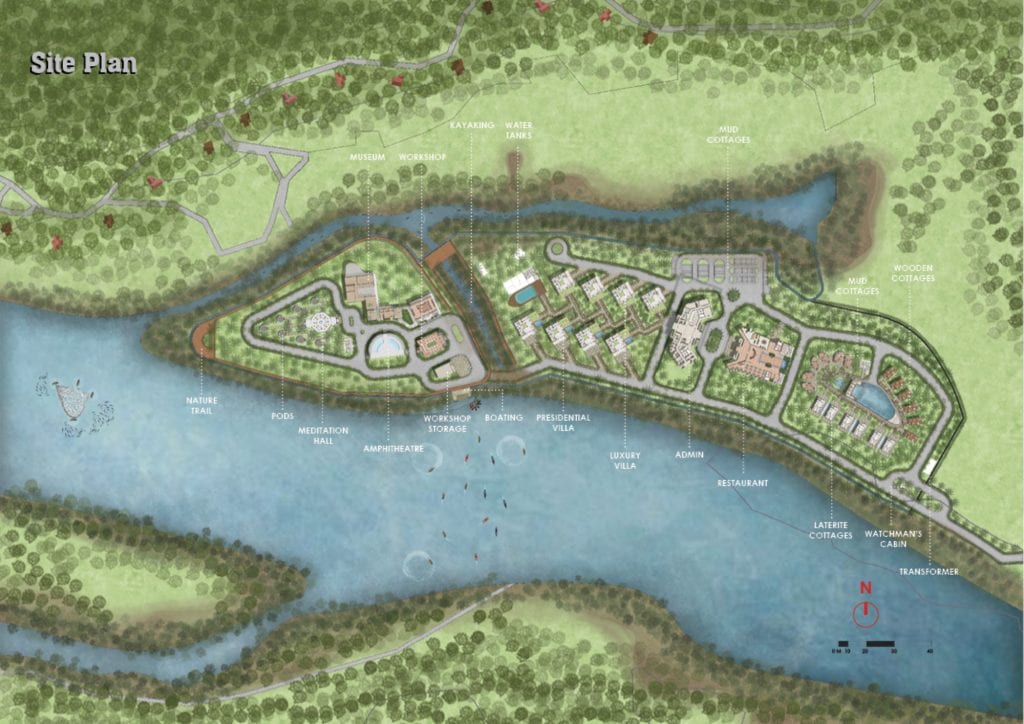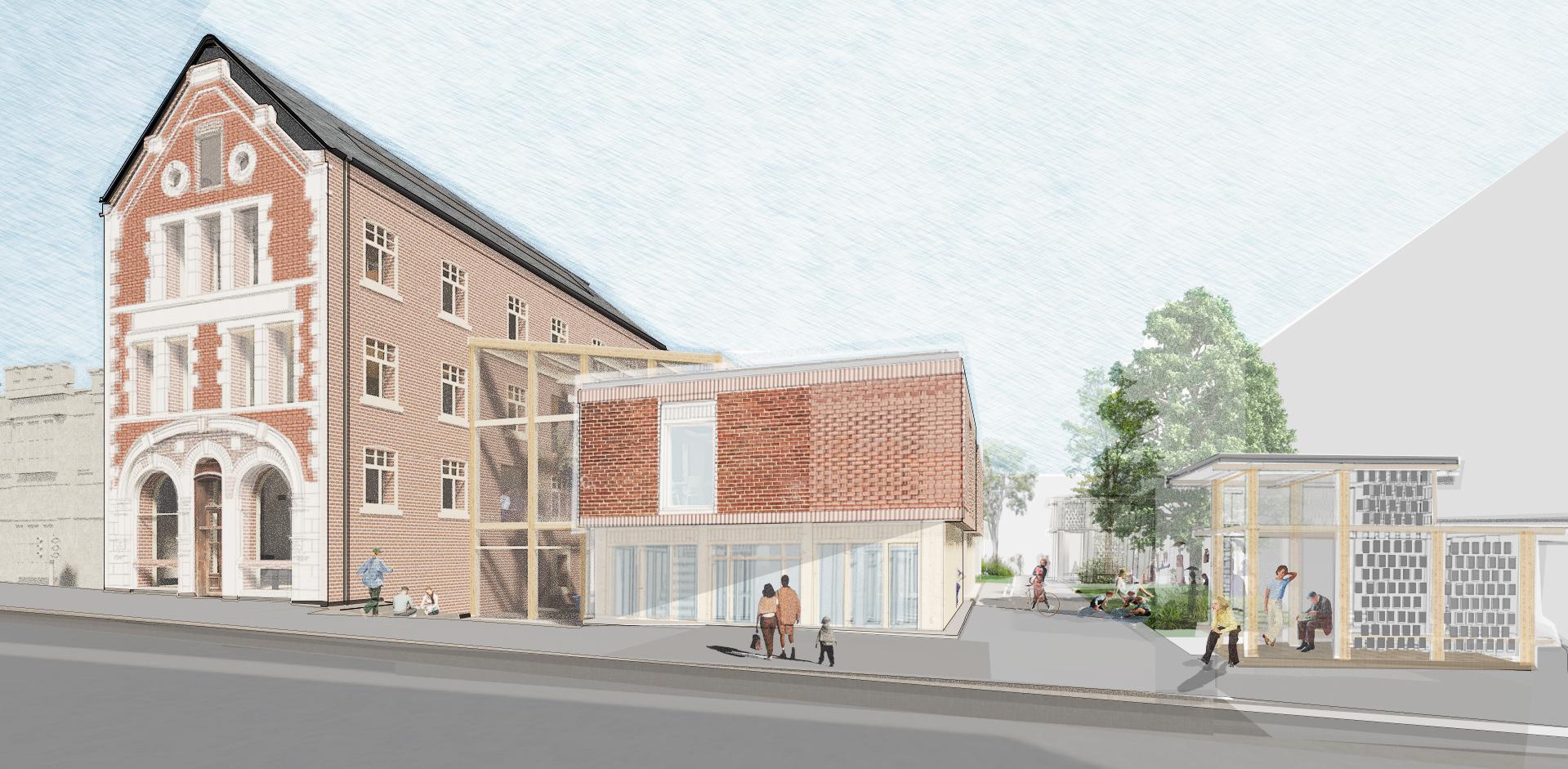Nature Woven: A Bio-Tourism Resort Redefines Coastal Sustainability in Malvan
Tanvi Shraddha Santosh Mestri’s Undergraduate Thesis Blends Vernacular Wisdom with Ecological Innovation
For many architecture students, the undergraduate thesis represents a critical hinge between academic theory and the palpable challenges of practice. For Tanvi Shraddha Santosh Mestri, an architecture graduate from Sir J.J. College of Architecture, Mumbai, this pivotal project became an opportunity to fuse personal passion with regional responsibility. Her “Bio-Tourism Resort at Malvan” is both a masterful academic exercise and an inspiring prototype for sustainable tourism along India’s Konkan coast.
A Proven Talent Shaped by Experience and Achievement
Tanvi’s architectural journey is rooted in an unwavering commitment to context-sensitive design. Her accolades—1st place in D.Y. Patil’s ‘Bridge to Nature’ competition and 2nd in Nirmal’s 2024 Toilet Design Competition—speak to a creative mind attuned to real-world urgencies and social needs. Through her internship and freelance work with CPWD Mumbai, she has contributed to a spectrum of public projects, from gyms to interiors to community masterplans, further anchoring her concepts in practicality and regional sensibilities.
This hands-on exposure, coupled with her fascination for sustainable practices, set the stage for an ambitious thesis project—one that would rigorously interrogate the boundaries between architecture, environment, and culture.
Site as Inspiration: Malvan’s Ecology and Community
Malvan, a coastal town famed for its tranquil backwaters, vibrant culture, and lush biodiversity, became Tanvi’s muse and laboratory. Rather than treating the land as a blank canvas, she viewed its river edges, undulating contours, and dense vegetation as essential partners in the design process. The masterplan of the Bio-Tourism Resort is therefore far from intrusive; it is a choreography that celebrates natural systems, positioning structures to tread lightly and, at times, almost disappear into the verdant Konkan scenery.
The layout follows the rhythm of the terrain, bending pathways along native tree clusters and articulating open spaces that flow seamlessly from the riverbank to built pavilions. This immersive vision dissolves traditional boundaries between visitor and landscape, embodying a hospitality experience rooted in respect and reverence.
Learning from the Vernacular: Materiality and Climate Wisdom
A defining hallmark of Tanvi’s approach is her embrace of indigenous building technologies. Drawing deeply from Konkan’s architectural lineage, she specifies laterite stone—a porous, locally abundant material—for walls, paired with the region’s iconic Mangalore tile roofs. These choices are neither nostalgic nor arbitrary; they are meticulously informed by the region’s climate imperatives, leveraging material thermal mass and natural ventilation to cool spaces without reliance on mechanical systems.
Overhanging roofs, latticework screens, and generous verandahs create a microclimate of comfort and protection, reminiscent of the wisdom embedded in local homes. Even in communal areas, such as the meditation hall and exhibition space, traditional joinery and earth-toned colour palettes ensure that new interventions harmonize with both setting and spirit.
Designing for Community: Social Inclusion at the Heart
While the architecture is inspired by place, it is equally responsive to people. The resort’s programmed spaces—cottages, gathering halls, and collaborative work zones—anticipate a range of interactions between tourists, staff, and local residents. Tanvi’s site plan intentionally places these facilities to foster casual encounters and cultural exchange, foregrounding participatory engagement over passive consumption. Moreover, her operational vision calls for prioritizing local employment, skill-building workshops, and the inclusion of community artisans in both construction and ongoing hospitality services.
This ethic extends to the resort’s environmental strategies: solar panels are discreetly integrated atop roofs, water is harvested and recycled onsite, and organic kitchen gardens are managed in partnership with neighbourhood farming collectives. The result is not just a retreat but a living demonstration of responsible, community-grounded tourism.
Resilient and Regenerative: An Environmental Manifesto
Where so many resorts risk overwhelming their context, Tanvi’s thesis insists on regeneration. Existing vegetation is preserved and augmented, with new plantings chosen for their ecological benefits—shade, erosion control, and habitat support. Boardwalks are elevated above marshy terrain to minimize compaction, and discreet lighting aims to preserve the nocturnal rhythms of local wildlife. In every detail, the ethos is clear: architecture should not simply minimize harm, but actively enrich the environment it inhabits.
This commitment is strengthened by the measurable sustainability targets embedded in her scheme, including ambitious goals for zero-discharge waste management, net-positive energy production, and the use of bio-based construction materials. Her vision, ultimately, is to seed a scalable template for eco-resorts that might be adapted across similar fragile landscapes along India’s coast.
Connect and Collaborate: Exploring Tanvi’s Portfolio
Tanvi Shraddha Santosh Mestri’s work is testament to a generation of emerging architects who see design as an act of stewardship—thoughtful, collaborative, and deeply contextual. Whether you are an advocate for sustainable tourism, a potential collaborator, or simply an admirer of visionary thinking grounded in local realities, there are many ways to engage with her portfolio.
For design inquiries, research collaborations, or further dialogue, Tanvi can be reached directly at mestritanvi3@gmail.com. Her evolving body of work is also showcased on Instagram (@tanvi_mestri_03), while additional project details and portfolios are accessible via her LinkedIn Featured section.
As Tanvi’s career continues to evolve through research, competition, and hands-on practice, her “Bio-Tourism Resort at Malvan” stands as both an exemplary academic achievement and a timely call for architecture that honours both heritage and the planet’s future. The project reminds us that, when sensitively realized, good design is something we can all call home.







Add a comment